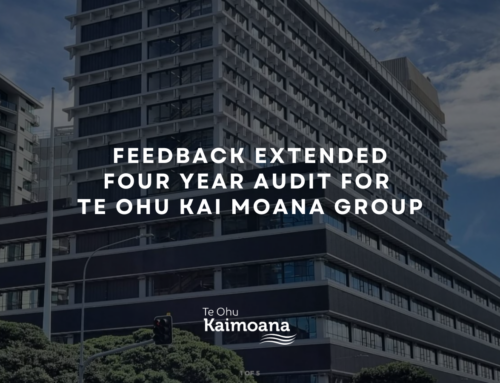Why is ecosystem protection top-down when fisheries conservation successes have been bottom-up?
The question, posed by University of California Santa Barbara economist Gary Libecap to attendees at a Law and Economics Association event last week, stuck with me.
Professor Libecap is something of a god in economics. In a prior life, I would tell my undergraduate students about the Pantheon of the Econ Gods. Libecap’s work in environmental economics easily put him in the Pantheon. It has also made him Distinguished Professor of Corporate Environmental Management and Distinguished Professor of Economics at UCSB.
Libecap is best known for his work on the management of ‘open-access’ resources. Absent governance institutions managing access to resources like fisheries, aquifers and rivers – or, for that matter, pollutants like sulphur dioxide or carbon dioxide – we can expect a Tragedy of the Commons to ensue. Overuse makes everyone worse off.
He has spent the past semester visiting with my former colleagues in the economics department at the University of Canterbury. Te Ohu Kaimoana asked Libecap to review the international literature on the effectiveness of Marine Protected Areas. The Law and Economics Association of New Zealand (LEANZ), in conjunction with Te Ohu Kaimoana, brought him to Wellington to talk about his work.
In fisheries, bottom-up approaches like New Zealand’s Quota Management System have proved rather successful – at least within the territorial waters of the jurisdictions using them.
On the other hand, previous decades of top-down regulatory approaches have failed. When overfishing led to scarcity, governments tried imposing limits on the number of days commercial boats were allowed to fish. That led to ‘fishing derbies’, with commercial fishers buying bigger and more powerful boats to get the most fish during the limited number of days available. As then tends to happen, problems caused by the first round of regulation begets further regulation to mitigate those problems – and further rounds after that.
What instead is needed is a shift of approach from top-down to bottom-up. Libecap highlighted New Zealand’s Quota Management System (QMS) as the envy of the conservation world. Fishers find what works best for them, within a system that works to maintain overall sustainability by capping the total amount of fish that can be caught in any year. Fishers are then part of the solution to the environmental problem.
When a QMS is working well, all players have an interest in making sure everyone plays by the rules. While we here in New Zealand certainly recognise the problems in our QMS, some of which were outlined in the New Zealand Initiative’s 2016 and 2017 reports on fisheries, approaches elsewhere have been rather worse.
And that led to Libecap’s question. QMS systems have been very successful in the grand scheme of things. So why do ecosystem protection efforts typically first look to top-down approaches like Marine Protection Areas?
Marine Protection Areas are not uncommon around the world. New Zealand has many as well. But the Kermadec area is 35 times larger than the rest of New Zealand’s combined marine protection areas combined.
Professor Libecap’s international survey work suggests Marine Protection Areas are typically contentious and polarising, providing a political solution to a conservation problem that is only as durable as the political will to enforce the regime. With a lack of measurable objectives, an MPA’s success or failure can be difficult to evaluate. With neither the ability to balance socioeconomic goals with environmental goals, nor a proportionate sharing of the regime’s benefits and costs, MPAs are unlikely to generate the long-term support needed to maintain them as political priorities change.
But bottom-up approaches like the QMS build a constituency with an interest in maintaining conservation over time – if a fishery collapses and its total allowable catch drops to nothing, its fishing quota is worthless.
These approaches also build on Nobel laureate Elinor Ostrom’s work on governing the commons. She found that trust and proportionate sharing of costs and benefits are critical elements of successful collective action. New Zealand’s fisheries quota-management system shares the burden of conservation among users of the fisheries, who scale back their fishing when conservation demands it. But those fishers also share proportionately in the benefits through their quota rights. When a resource’s users have an ownership stake, we can expect better outcomes. If traditional users find themselves instead shut out, the resulting lack of trust makes for a less effective system.
In his Wellington speech, Professor Libecap suggested rethinking the Kermadec sanctuary to involve meaningful participation by iwi in defining the policy’s objectives, evaluation framework, and methods. He also suggested designing total allowable catch systems around the ecosystem attributes that need to be protected; tradeable quota systems in British Columbia, Canada, have dramatically reduced habitat damage and protected cold-water sponges and coral.
But he left his broader question unanswered: Why is the political first-response to environmental protection more typically top-down regulation rather than more bottom-up approaches?
In a country like New Zealand, for example, a strong and comprehensive Emissions Trading Scheme is the single best way of meeting our climate obligations. It ensures that we collectively take up the cheapest and most effective ways of reducing New Zealand’s greenhouse gas emissions before looking to the more expensive solutions.
It is difficult to find more cost-effective ways of reducing overall emissions than buying back and retiring carbon permits within an ETS. But it runs counter to our intuitions.
It does not look like we are doing something.
Experience in markets where environmental costs are not priced has led to distrust of the environmental credibility of markets more generally.
And it is easy for a government setting up a top-down regulatory regime to point to that activity when asked what it has done for the environment – even if that regulatory regime costs more and does less for the environment than a comparable investment through an ETS.
Where environmental problems press hard, from fisheries and global warming to freshwater management, we have to look to what can do the most good – and be open to solutions built from the bottom-up.
Dr Eric Crampton





